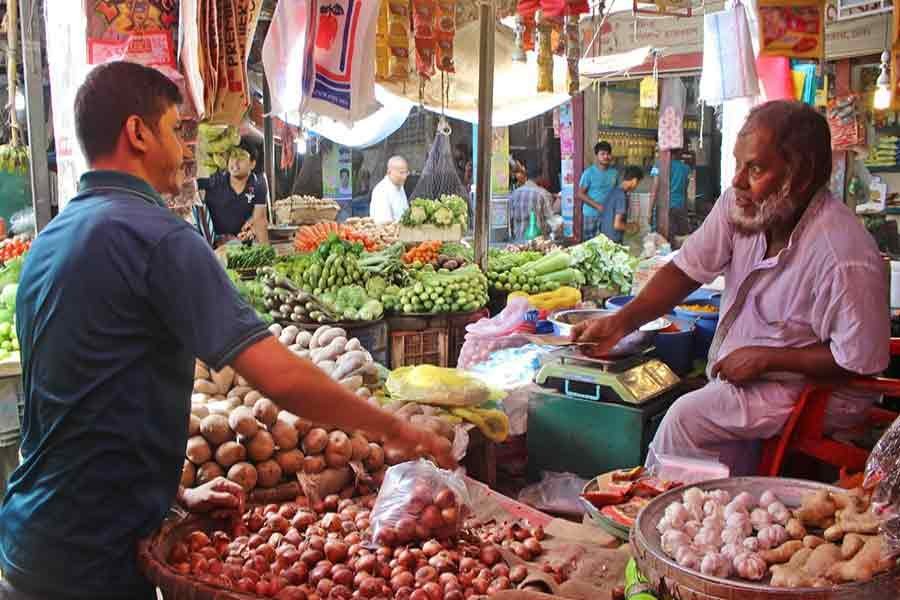
Published :
Updated :

There could not be any worse time than the current one for the prices of essentials going through the roof. Most daily essentials have recorded an unabated rise in recent months. Lately, the pace of increase has only intensified. Barring fish and poultry, essentials, including the main staple rice, are becoming costlier by the day. All varieties of rice are now being sold at record high prices. Vegetables, spices, eggs and edible oils are costlier than before.
The Consumer Price Index (CPI) data released by the Bangladesh Bureau of Statistics (BBS), the national statistical organisation, on monthly basis do also corroborate the uptrend in prices of most essentials. The rate of inflation in September last, according to the BBS data, was 5.97 per cent compared to that of 5.54 per cent in the corresponding month of 2019. What is however worrying is the food inflation. It went up by 1.20 percentage point to 6.50 per cent in September last over that in the same month of last year. This is a notable jump. The price trend is indicative of a further rise in food inflation during the current month (October).
Both nature and humans are responsible for the latest rise in essentials' prices. Recurrent floods---some northern districts were hit by four consecutive bouts of flooding--- are blamed for the rise in the prices of vegetables. Abrupt ban on onion export by the Indian government has pushed the price of the item in the domestic market. Traders and refiners have upped the price of edible oils capitalising on the ongoing volatility in the international edible oil market.
The reasons behind the rise in the prices of the most politically sensitive item---rice--- remain rather murky. The country had its record bumper harvest of Boro rice in the last season. The government silos do have sufficient stock of rice. The warehouses owned by the millers are also filled to their capacity. Then again, the supply of rice in the market is abundant. Yet the prices of all varieties of rice have been on the rise. It could be that the millers are sensing a shortfall in next rice crop-Aman- production because of this year's extensive floods. The price-hike, it seems, is a systemic response from the millers.
The impact of the price hike, however, to some extent, is different from that witnessed on previous occasions. This time the size of the population affected by the price-rise is bigger as in addition to poor and low-income people, the middle-class is also hit hard. The pandemic has also sapped much of the latter's financial strength. If the current price trend persists, the paceof economic recovery might lose steam since spending by the middle-class remains a key driver. The rise in the cost of living, as a natural outcome, would force members of this class to spend less on non-food items.
On its part, the government has tried to intervene in the rice market fixing the price of a certain variety of rice, but the move has not worked. In other areas, the Ministry of Commerce has so far preferred to be an onlooker. There is no denying that when some commodities are in short supply, their prices would come under pressure. The government may not control the prices, but it surely can play a very effective role in keeping the same within a reasonable level. It would not be a big ask if the consumers expect the government to play a befitting role in a very difficult time.


 For all latest news, follow The Financial Express Google News channel.
For all latest news, follow The Financial Express Google News channel.